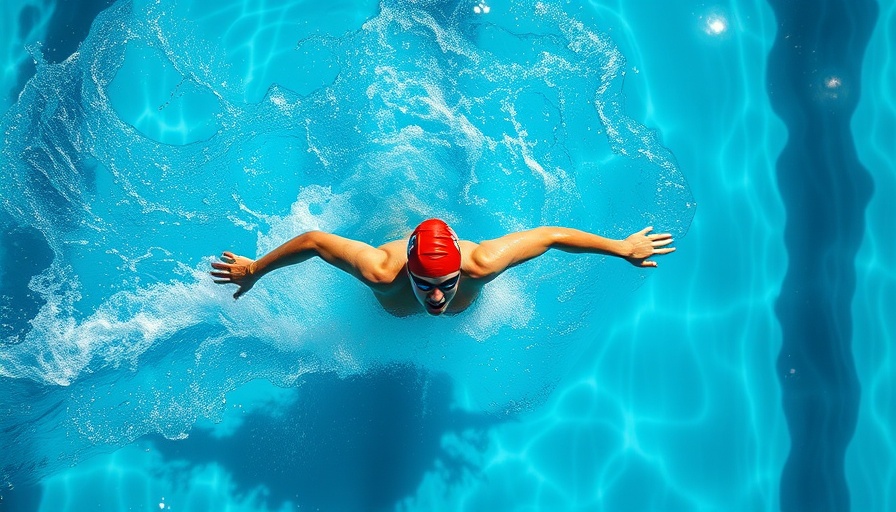
Swimming: A Hidden Gem for Cardio Enthusiasts
For digital nomads striving to maintain their health while on the road, understanding the value of swimming as a cardiovascular workout is crucial. Many people mistakenly believe that only running counts as serious cardio, but swimming holds its own as an equally effective option. According to Chris Gagliardi, scientific education content manager at ACE Fitness, "Swimming is absolutely a cardio activity." This is crucial for travelers who may find themselves in locations with access to pools but not suitable running paths.
How Swimming Stacks Up Against Running
The longstanding rivalry between swimming and running poses an interesting discussion. While both activities are cardiovascular in nature, they impact the body differently. Research indicates that elite athletes from both disciplines display strong hearts, yet the demands placed on them vary. For instance, the left ventricles of runners tend to be larger than those of swimmers, likely due to the gravitational forces acting on an upright body during running. However, neither swimmer nor runner can claim superiority in heart health; both have unique benefits that align with different fitness goals.
Maximize Your Cardio Benefits While Swimming
To truly harness the cardiovascular benefits of swimming, proficiency in the sport is key. Those who excel at running may find that their swimming skills take time to develop. According to Gagliardi, a strong swimmer can effectively match the cardio intensity of a seasoned runner. Staying continuous in the water without frequent rests will help achieve a high-intensity workout and maximize calorie burn.
Caloric Burn: Swimming vs. Running
An essential consideration for health-conscious nomads is caloric expenditure. Many may be surprised to learn that swimming can burn just as many calories as running under the right conditions. For example, a 160-pound person can burn about 370 calories running at a 10-minute mile pace, while swimming fast can yield comparable results at 378 calories for the same 30 minutes. Gagliardi points out that it may take longer to swim the same distance as a run to achieve similar caloric results, underscoring the need for endurance and persistence in the pool.
Building Muscle While Swimming
Not only does swimming enhance cardiovascular fitness, but it can also contribute to muscle building. Achieving visible gains requires tailored workouts in the water. Digital nomads can incorporate resistance training techniques like using swim paddles or performing resistance swims to stimulate muscle growth alongside cardio fitness.
The Rise of Swim Run: A New Frontier
A recent trend worth noting among fitness enthusiasts is the advent of "Swim Run" competitions, which combine swimming and running into one dynamic event. This hybrid sport allows participants to experience the endurance benefits of both cardio exercises. For fitness-conscious travelers, Swim Run presents an exciting opportunity to engage in a diverse workout—potentially in scenic locations that inspire both sports.
Actionable Insights for the Road
For digital nomads, integrating swimming into your fitness routine can yield substantial cardiovascular benefits. Seek out local pools on your travels and aim to swim laps consistently, increasing your intensity over time. Learning proper techniques and enhancing your comfort in the water not only leads to improved health but can also enrich your travel experience.
Incorporating these insights can pay huge dividends in maintaining and improving your fitness while on the road. So gear up, wherever you are, and dive into a cardiovascular workout that complements your nomadic lifestyle.
 Add Row
Add Row  Add
Add 




Write A Comment